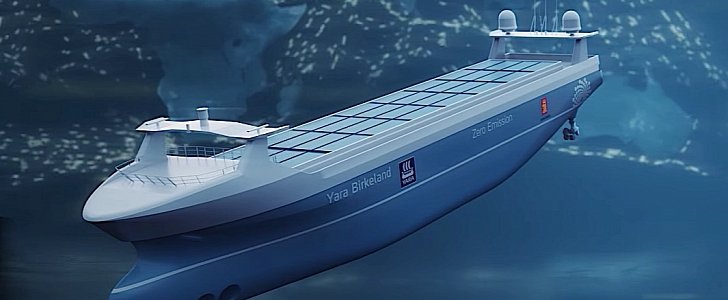Automation in one form or another does seem to represent the future of transportation. Being so visible to the public, the automotive industry is the one apparently making the most decisive strides towards the implementation of self-operated vehicles.
But other means of transportation are much easier to automate. Trains and naval vessels could be made to operate independently much faster, easier and with greater success. So far, few have dared into creating such technologies.
The floodgates might have opened however this week, as far as maritime autonomous systems are concerned. Global maritime industry group Wilhelmsen announced an agreement with technology provider Kongsberg that would lead to the creation of autonomous ships in Norway.
Plans are that the world’s first 100 percent electric, autonomous vessels would be launched as soon as 2019, with full automation to be achieved one year later.
The project is to be headed by a new company created by Wilhelmsen and Kongsberg, which will be called Massterly. At first, the ships would act pretty much as drones do, being remotely operated from land-based control centers. Later, these centers would act as supervising facilities for the autonomous vessels.
The new ships will be used at first for short sea shipping, aiming to help reduce emissions.
“In recent years there has been rapid development driven by a significant increase in demand from customers worldwide, from the traditional maritime industry and others," says Geir Haoy, Kongsberg CEO.
“When autonomous ships soon are a reality, Massterly will be crucial for digitalizing the infrastructure and operations.”
At the beginning of the year, another player in the industry, this time from The Netherlands, announced the world's first barges powered by carbon-neutral batteries.
The transport vessels will be capable of doing their runs unattended, being designed to operate autonomously but also be controlled remotely from the shore.
The floodgates might have opened however this week, as far as maritime autonomous systems are concerned. Global maritime industry group Wilhelmsen announced an agreement with technology provider Kongsberg that would lead to the creation of autonomous ships in Norway.
Plans are that the world’s first 100 percent electric, autonomous vessels would be launched as soon as 2019, with full automation to be achieved one year later.
The project is to be headed by a new company created by Wilhelmsen and Kongsberg, which will be called Massterly. At first, the ships would act pretty much as drones do, being remotely operated from land-based control centers. Later, these centers would act as supervising facilities for the autonomous vessels.
The new ships will be used at first for short sea shipping, aiming to help reduce emissions.
“In recent years there has been rapid development driven by a significant increase in demand from customers worldwide, from the traditional maritime industry and others," says Geir Haoy, Kongsberg CEO.
“When autonomous ships soon are a reality, Massterly will be crucial for digitalizing the infrastructure and operations.”
At the beginning of the year, another player in the industry, this time from The Netherlands, announced the world's first barges powered by carbon-neutral batteries.
The transport vessels will be capable of doing their runs unattended, being designed to operate autonomously but also be controlled remotely from the shore.


